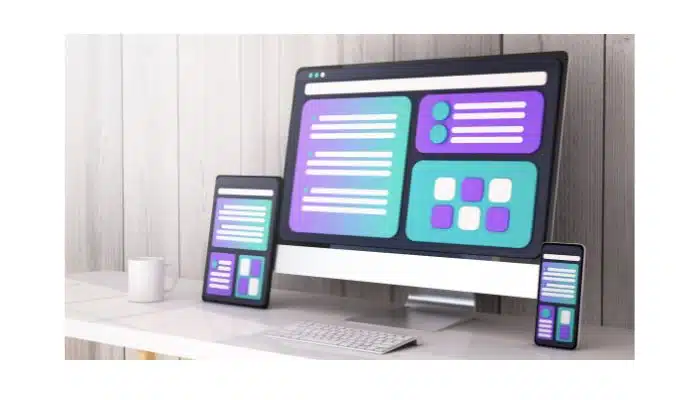Clickless content, a growing trend in the digital marketing world, challenges the conventional norm of driving clicks to your website. Although it may seem counterproductive at first glance, this strategy offers significant benefits, such as improving brand visibility, building trust and authority, and optimizing for voice search.
In this article, we tell you what click-free content is, why it’s essential in today’s SEO landscape and how you can implement this strategy to benefit your business. With the right approach, click-free content can be a successful tool for standing out in an increasingly competitive digital marketplace.

Clickless content, also known as “zero response” or “direct response,” refers to information that appears at the top of search results, designed to satisfy the user’s query directly on the search results page, without the need to click on a web link for more details.
This type of content is commonly displayed in what are known as “Featured Snippets” on Google or similar formats on other search engines.

Creating click-free content offers several key benefits, both for users and for the brands or websites that produce this type of content. Here’s why you should consider integrating no-click content into your digital marketing strategy:
Appearing in featured snippets or direct responses positions your brand at the top of search results, significantly increasing visibility.
Even if they do not generate a direct click, these snippets contribute to brand recognition, as users associate your site with relevant and reliable information.
Providing clear and accurate answers can establish your site as an authority on a specific topic. This is especially important in industries where trust and experience are essential.
With the increased use of voice assistants, click-free content is essential, as these devices often read the direct response from search results.
Tailoring your content for voice queries can increase your relevance in this growing search segment.
Providing quick and accessible answers improves the user experience, especially for simple queries seeking immediate answers, and this user-centric approach can increase the trust and satisfaction of the target audience.
Although the primary objective is not to generate clicks, users may be motivated to explore your site further if they find the information provided useful and relevant, which can lead to an indirect increase in web traffic and user engagement.
Search behavior is evolving, with more users looking for quick and direct answers. Adapting your content to these trends can keep you relevant and competitive in today’s digital landscape.

Non-clickable content can be beneficial for SEO, albeit in a different way than a traditional search engine optimization strategy. Here’s how it can positively impact your SEO:
Click-free content, especially in the context of search results and featured snippets, offers several significant benefits to users. These include:
Users get immediate answers to their queries directly on the search results page, which is convenient for simple questions or definitions.
By avoiding the need to click on multiple links to find an answer, users save time, which is especially valuable in searches performed on the fly or when information is needed quickly.
Featured snippets and direct answers improve the overall search experience by making it easier for users to find what they need efficiently.
Generally, search engines select for these snippets the content they consider to be the most reliable and high quality, which helps users obtain accurate and useful information.
In the age of voice assistants, click-free content is essential, as these devices often provide answers based on the highlighted snippets of search results.
This approach focuses on convenience and user needs, providing information in a quick and uncomplicated manner.
For users with time constraints or for those who may have difficulty navigating multiple web pages, click-free content offers a more accessible way to access information.

Creating effective no-click content requires a specific strategy, aimed at providing accurate and concise information that responds directly to users’ queries. Here are 8 tips to achieve it:
Identify the most common queries and search terms in your niche. Tools such as Google Keyword Planner or AnswerThe Public can be useful for this purpose.
Analyze the intent behind search queries. Are users looking for quick information, a step-by-step guide, a definition? Adapt your content to these intentions.
Write direct and to the point answers. For highlighted excerpts, ideally, limit your answers to 40-50 words.
Organize your content in formats that are easy to read and scan, such as numbered lists, bullets or tables, which are popular in featured snippets.
Use frequently asked questions as headings in your content to attract search engines looking to match these queries with direct answers.
Consider voice searches when creating your content. Responses should be natural and conversational, as if you were verbally answering a question.
Make sure your click-free content is up to date. Search engines prioritize the most recent and relevant information.
Even if the focus is on the text, including relevant visual material can enhance the attractiveness and comprehension of the content. Make sure images and videos are well labeled and optimized.
Measuring the success of non-click-through content can be challenging, as it is not based on traditional metrics such as clicks or direct traffic. However, there are several ways to assess its impact:
Use tools like Google Search Console to track your site’s appearance in featured snippets or direct responses. Observe changes in visibility and impressions.
Although click-free content is designed to answer questions directly, it can still generate clicks. Compare the CTR of pages appearing in featured snippets with other pages to assess impact.
Conduct surveys or use social media analytics tools to measure your brand recognition and perception, especially if you are regularly featured in direct responses.
If possible, track how your click-free content performs in voice searches, as these searches often use direct answers.
Use tools like Ahrefs or Moz to track if there is an increase in backlinks or mentions of your site, which can be an indicator of increased authority and visibility.
Monitor for increased engagement with your brand on social media, which can be a proxy indicator of the effectiveness of non-click-through content.
See if there is an increase in conversion metrics that could be indirectly influenced by improved visibility and brand recognition.
Compare your performance on featured snippets and direct responses with those of your competitors to understand your position in the marketplace.
Remember that the goal of click-free content is not only to occupy a featured snippet, but also to improve overall authority, brand recognition and provide value to users. These metrics will help you get a more holistic view of the impact of your non-click-through content strategy.
If you want to have the website you want or increase the online visibility of your brand, we know how to do it.
Shall we start today?
Leave a Reply